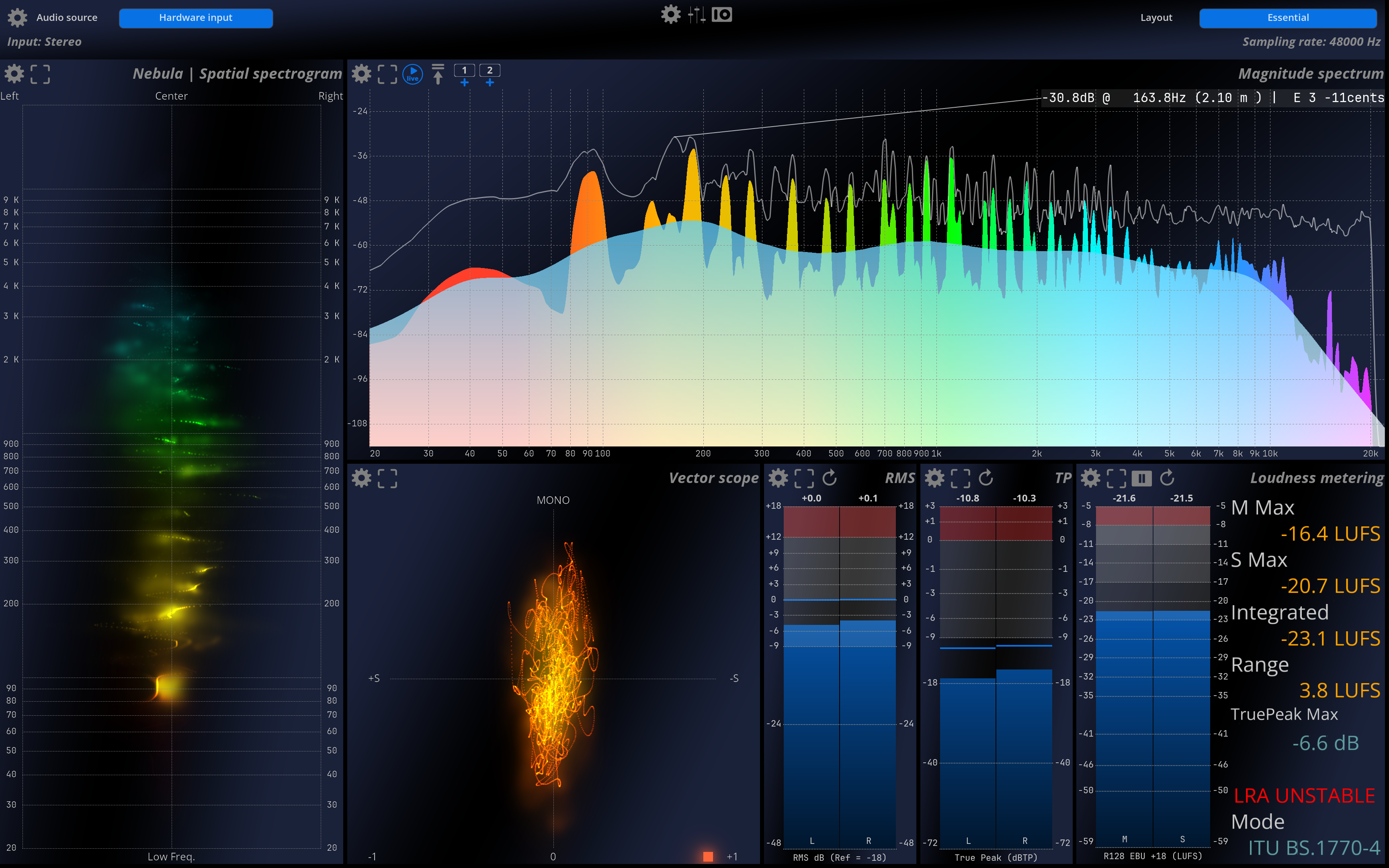User Interface
FLUX:: MiRA has a modular interface by design. Each audio analysis tool is called a scope. An ensemble of scopes is called a layout and it is the main display of the application. Layouts are designed to regroup scopes that make sense for specific usage and use cases. Layouts are user-manageable: you can create new ones, delete existing ones and arrange the scopes inside of one exactly as you wish.
App structure and lexicon
Having a clear understanding of the MiRA structure is of a major importance to use it efficiently. First we need to address a few terminology:
- A scope is an audio analysis tool, like a real-time spectrum analyzer, or a loudness meter. We can then say that each part of the GUI that displays some kind of information is a scope.
- A layout is an organization of scopes and of containers on the screen. MiRA is shipped with several default layouts that should handle most of the major use cases, but users can also create their own custom layouts. Containers are building blocks of the layouts. You can think of them as a subset of scopes, and they are useful to create more complex layout. A layout also can also recalls specific configurations presets (for UI, IO and Main preferences).
- A workspace is an ensemble of layouts. It also stores all the application’s global preferences (IO/UI/Settings menu). Workspaces are user manageable and can be saved, opened, duplicated, etc.
We can now visualize these different elements as boxes within boxes:
- A scope is an audio analysis or a user interface tool
- A container holds scopes
- A layout holds scopes and containers
- A workspace holds layouts and global application settings.
